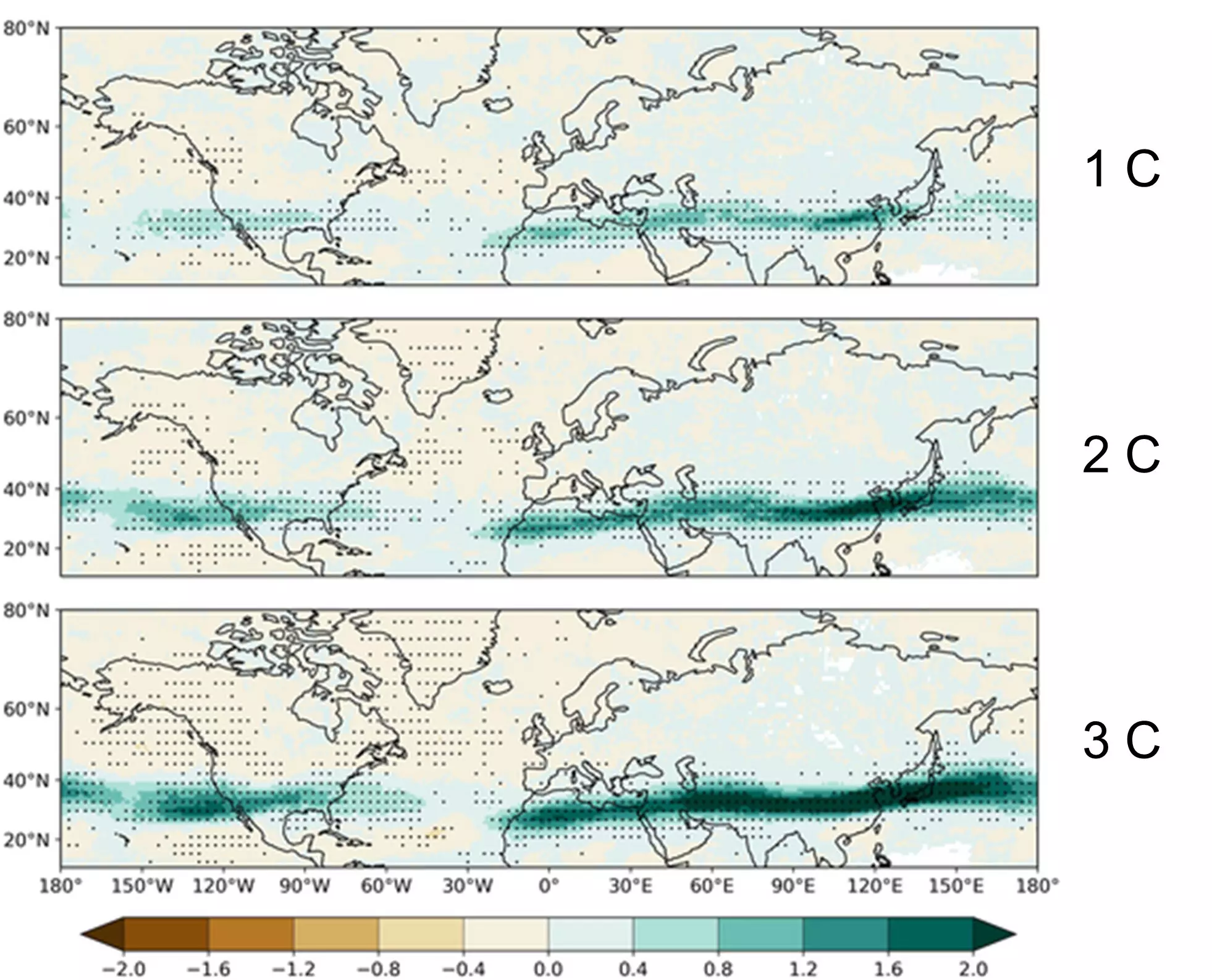As our planet warms and climate change accelerates, a hidden danger lurks in the skies—clear air turbulence (CAT). Recent research reveals that this unpredictable phenomenon is expected to occur with greater frequency in the Northern Hemisphere, accentuating the risks associated with air travel. Unlike the turbulence we anticipate when flying through thunderstorms or mountainous regions, clear air turbulence strikes without warning. This unsettling aspect of flying is not just an inconvenience; it directly impacts aviation safety and passenger comfort.
The study, published in the Journal of Geophysical Research: Atmospheres, highlights a significant trend: between 1980 and 2021, the frequency of CAT in the Northern Hemisphere increased. As researchers examined extensive data sets and utilized sophisticated models to predict future occurrences, it became evident that the impending climatic changes have dire implications for aviation. The findings are sobering; as temperatures rise, the likelihood of clear air turbulence will grow in tandem, making air travel potentially bumpier and more perilous in the coming decades.
Understanding the Mechanisms Behind Clear Air Turbulence
Clear air turbulence predominantly occurs in or near jet streams—rapidly moving air currents located in the upper troposphere approximately 32,000 to 39,000 feet above the Earth’s surface. Airplanes, which generally cruise at this altitude, may encounter turbulent spikes caused by vertical wind shear in these jet streams. The warmer climate means that the energy dynamics in our atmosphere are shifting; jet streams are expected to increase in velocity and frequency, magnifying occurrences of CAT.
Mohamed Foudad, lead author of the mentioned study, articulated the gravity of the situation, stating that “clear air turbulence is the main cause of aviation turbulence, contributing to roughly 70% of all weather-related aviation accidents in the United States”. The frequency of recent incidents involving serious clear air turbulence—like those troubling events experienced by Singapore Airlines and Air Europa—serves as a reminder of the increasing unpredictability that passengers may face.
The Regional Hazard: Areas Most Affected
According to Foudad and his team, geography plays a crucial role in the distribution of clear air turbulence. Their research indicates that regions influenced by the jet stream, particularly North Africa, East Asia, and the Middle East, will see the most pronounced increases in CAT. Currently, flights over East Asia represent the highest likelihood of encountering moderate-to-severe CAT—approximately 7.5% of the time—well above the 1% average across the Northern Hemisphere.
Through meticulous simulation, the researchers examined various climate models to project future conditions under different warming scenarios. They assessed warming increases ranging from 1 to 4 degrees Celsius, finding that atmospheric turbulence will likely escalate accordingly. The evidence suggests that while North Atlantic turbulence predictions remain inconclusive, other regions will experience fluctuations more clearly linked to climate change.
Aviation Engineering in a Changing Climate
As the reality of increased clear air turbulence sets in, aviation engineers are faced with a challenge: incorporating these insights into the design and construction of future aircraft. Foudad’s conclusions underscore the urgency: “We now have high confidence that climate change is increasing clear air turbulence,” he stated, illustrating the growing need for enhanced safety measures.
The aviation industry must adapt not only by designing more resilient aircraft but also by integrating improved forecasting technologies. Currently, predicting CAT is technically demanding and costly, leaving pilots with little to no tools to anticipate or navigate these sudden jolts. Studies exploring whether flights at different altitudes may yield safer flying conditions are necessary as we move forward.
The Future: Balancing Safety and Comfort in Air Travel
While the prospect of encountering greater air turbulence seems daunting, we must remember the remarkable engineering of modern aircraft, which have been built to withstand significant turbulence. Foudad reassures us, “People should also be aware that aircraft are designed to resist the worst turbulence that could happen.” Nonetheless, the potential for increased turbulence raises numerous questions concerning future aviation safety and passenger experiences.
As we grapple with the implications of climate change on air travel, recognizing the shift in our atmospheric conditions and taking proactive measures will be crucial. The potential increase in clear air turbulence not only emphasizes the urgency of addressing climate change but also calls for a collective effort to enhance aviation safety in an ever-evolving environment. Future air travel may become bumpier, but with the right innovations and preparations, we can aim to keep the skyways safe and secure.

